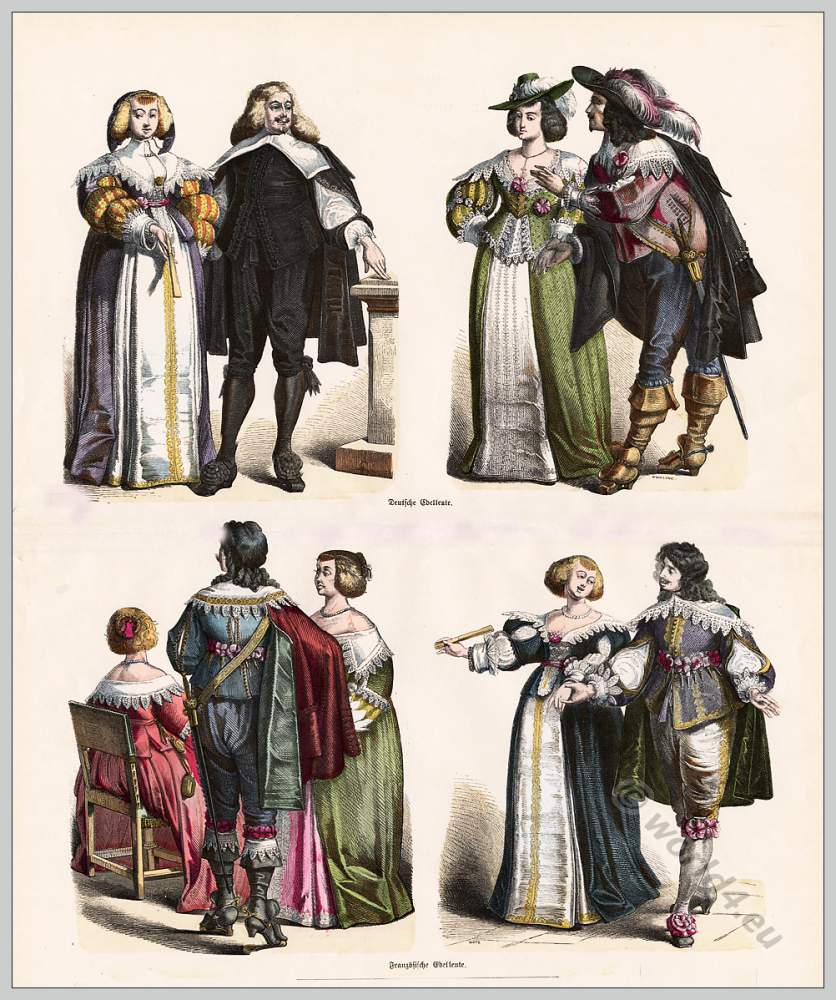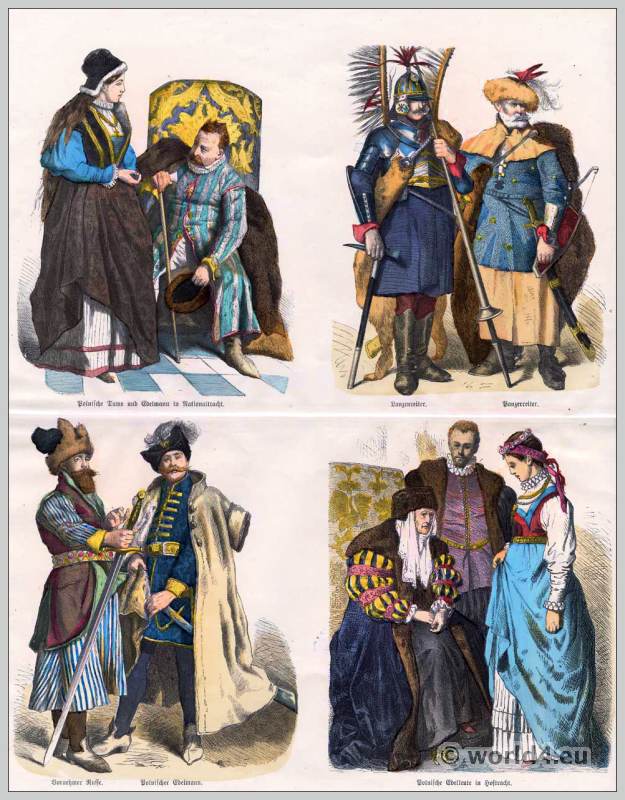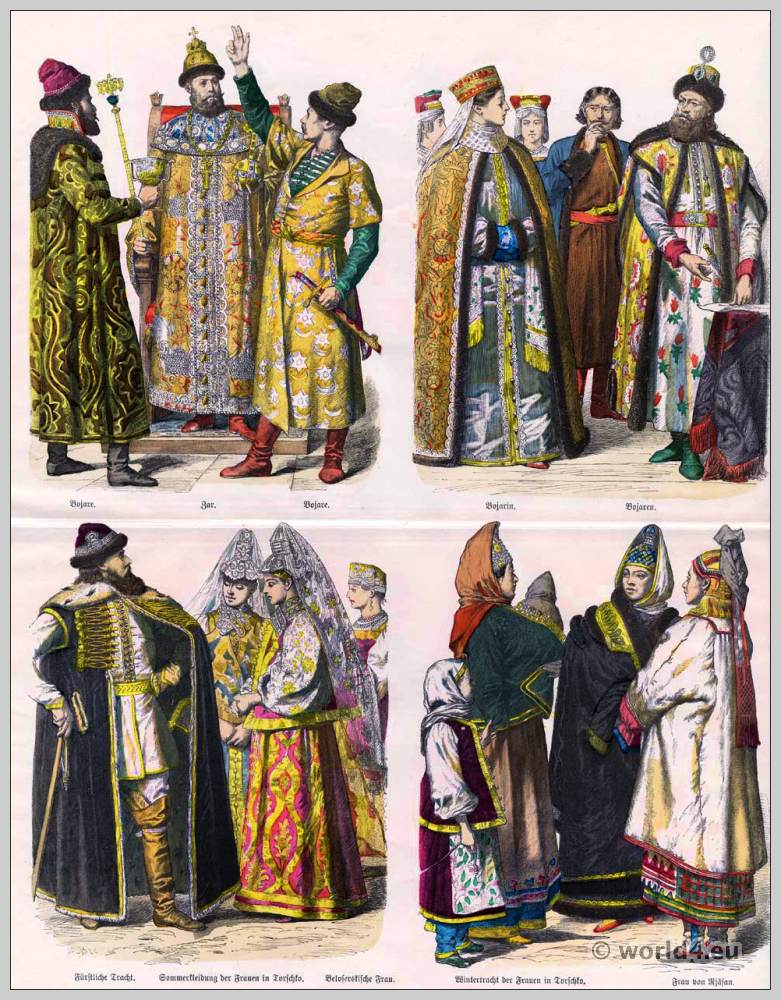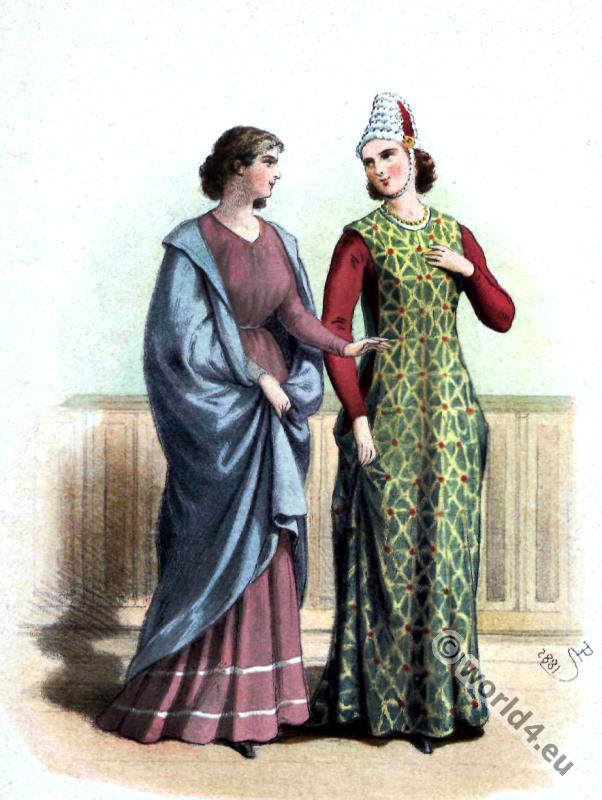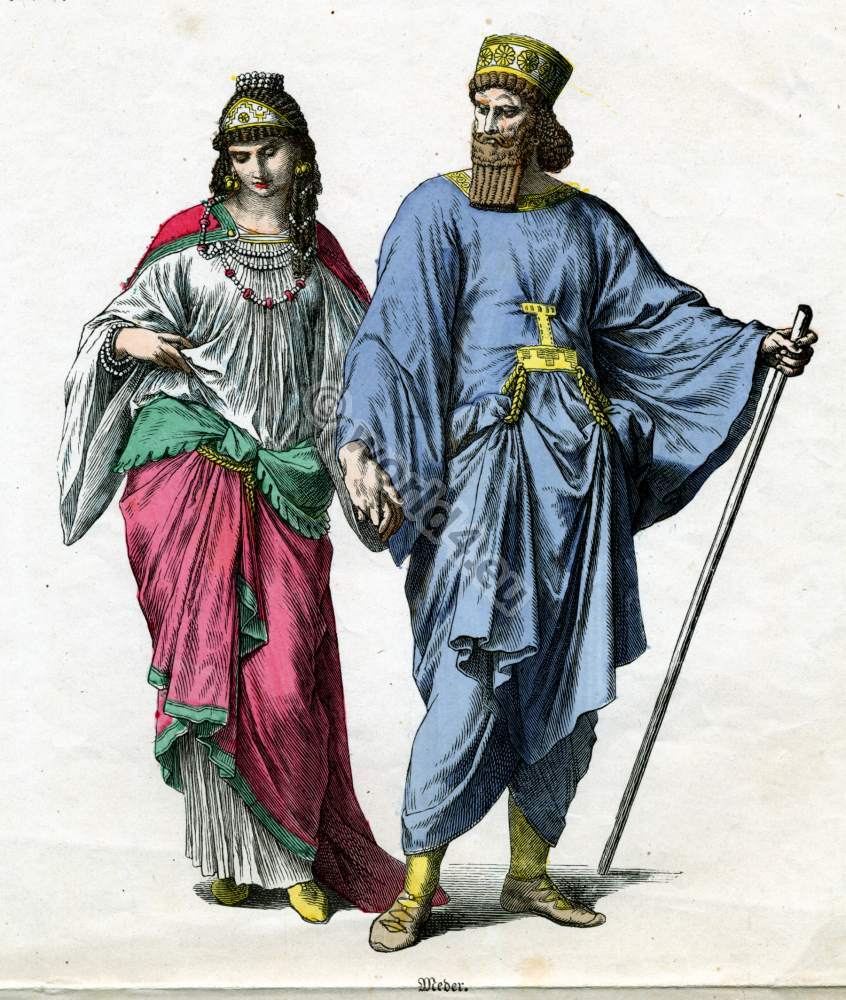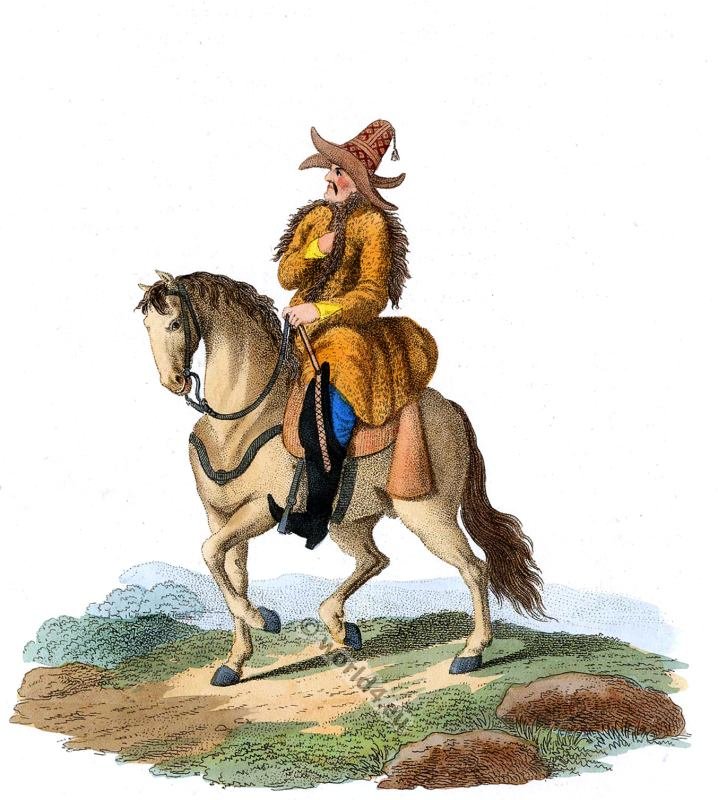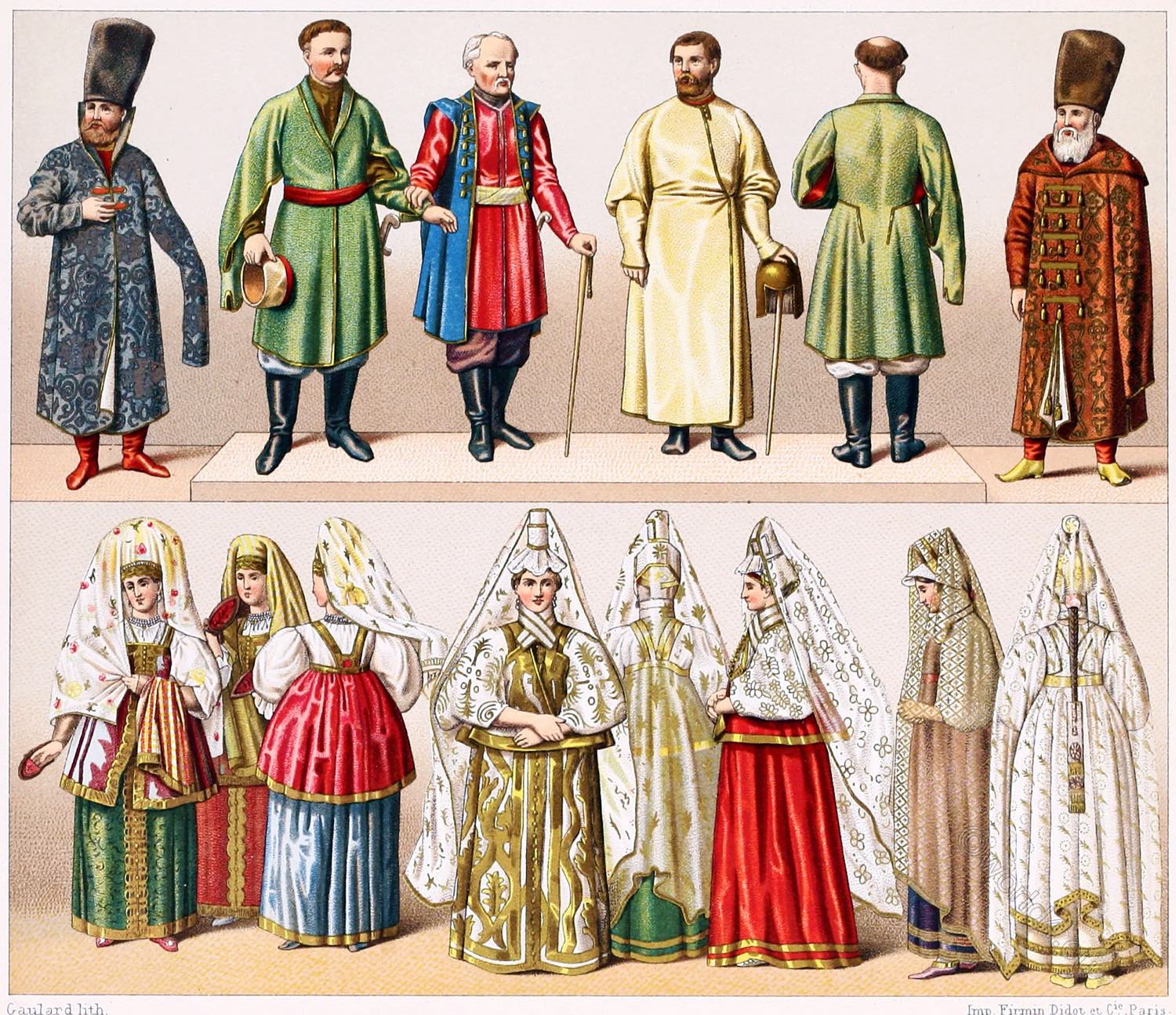
1, 2, 3, 4, 5, 6,
7, 8, 9, 10, 11, 12, 13, 14
RUSSIA XVI. XIX. CENTURY
HISTORICAL PERSONS AND FOLK COSTUMES.
Boyars or Boljars were nobles below the rank of a prince (Knjas) or tsar.
The title was common in Bulgaria, Kievan Rus, in old Russia, in the Grand Duchy of Lithuania (today Belarus, Ukraine, Russia and Lithuania), in the principalities of Wallachia (today Romania) and Moldavia (today the Republic of Moldavia and Romania) as well as in Serbia. The boyars formed the ruling class of large landowners in these countries partly since the 8th century and in Romania partly until 1945.
No. 1 and 6: Boyar costumes of the 17th century. After the engravings of the travels in Moscow by Ölschläger (Adam Olearius 1603-1671) 1647.
No. 2 and 5: The Cossack Breschka in the caftan of honour which he received from Peter the Great.
No. 3. Cossack captain at the time of Peter the Great.
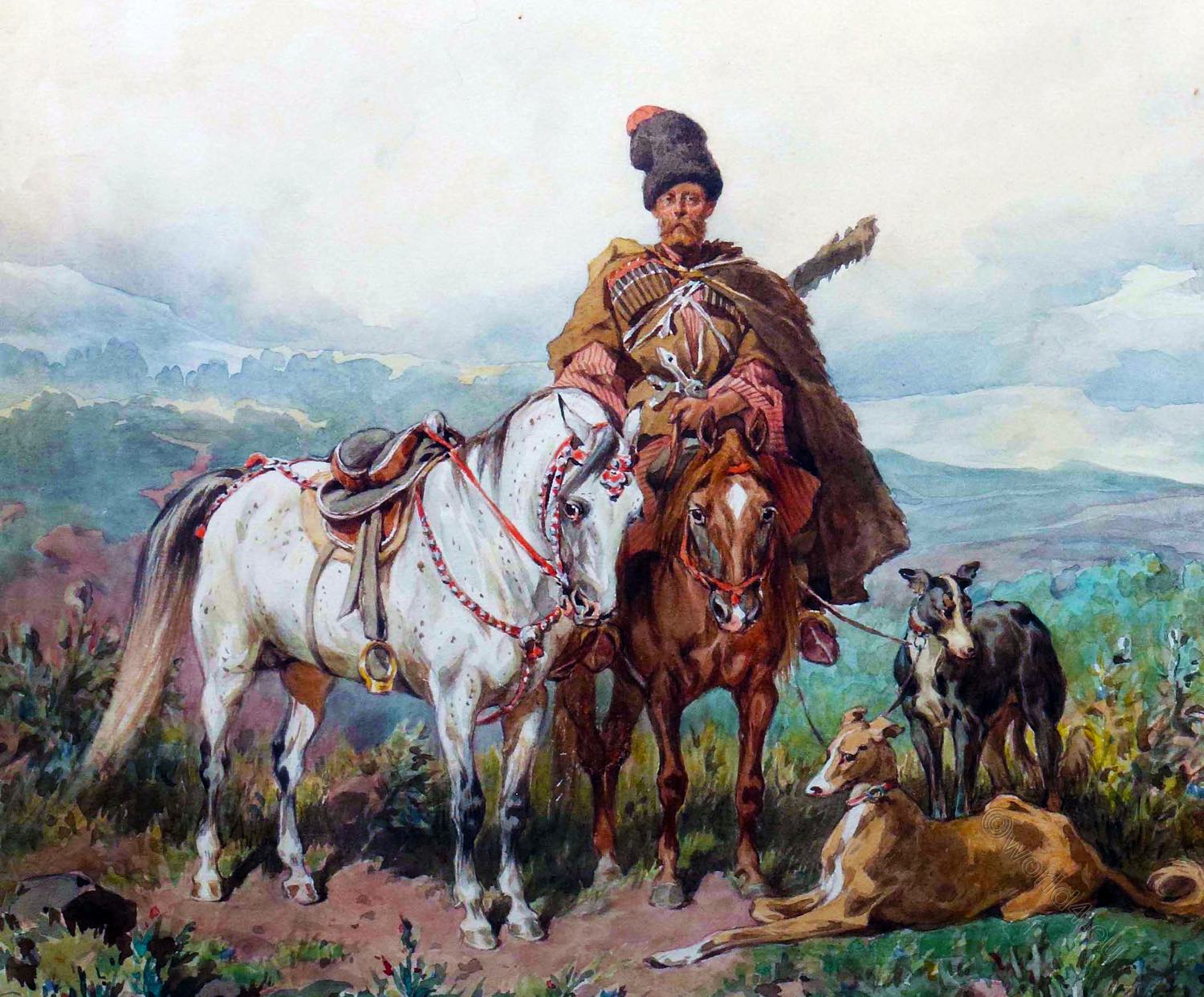
No. 4: Boyar of the 17th century in morning costume.
Nos. 7, 8 and 9: Women and girls from Tver at the confluence of the Tvertsa and Volga rivers, capital of the governorate of the same name, northwest of Moscow.
Nos. 10, 11. 12. 13, 14. Summer costume of women and girls from Toryok, today’s Torshok (Russian Торжо́к), Tver Governorate.
No. 15: Field costume of the boyar Boris Godunov, the first non-Rurikid tsar from 1598 to 1605. After an old drawing.
No. 16. 17. 18. Winter costume of the women of Toryok.
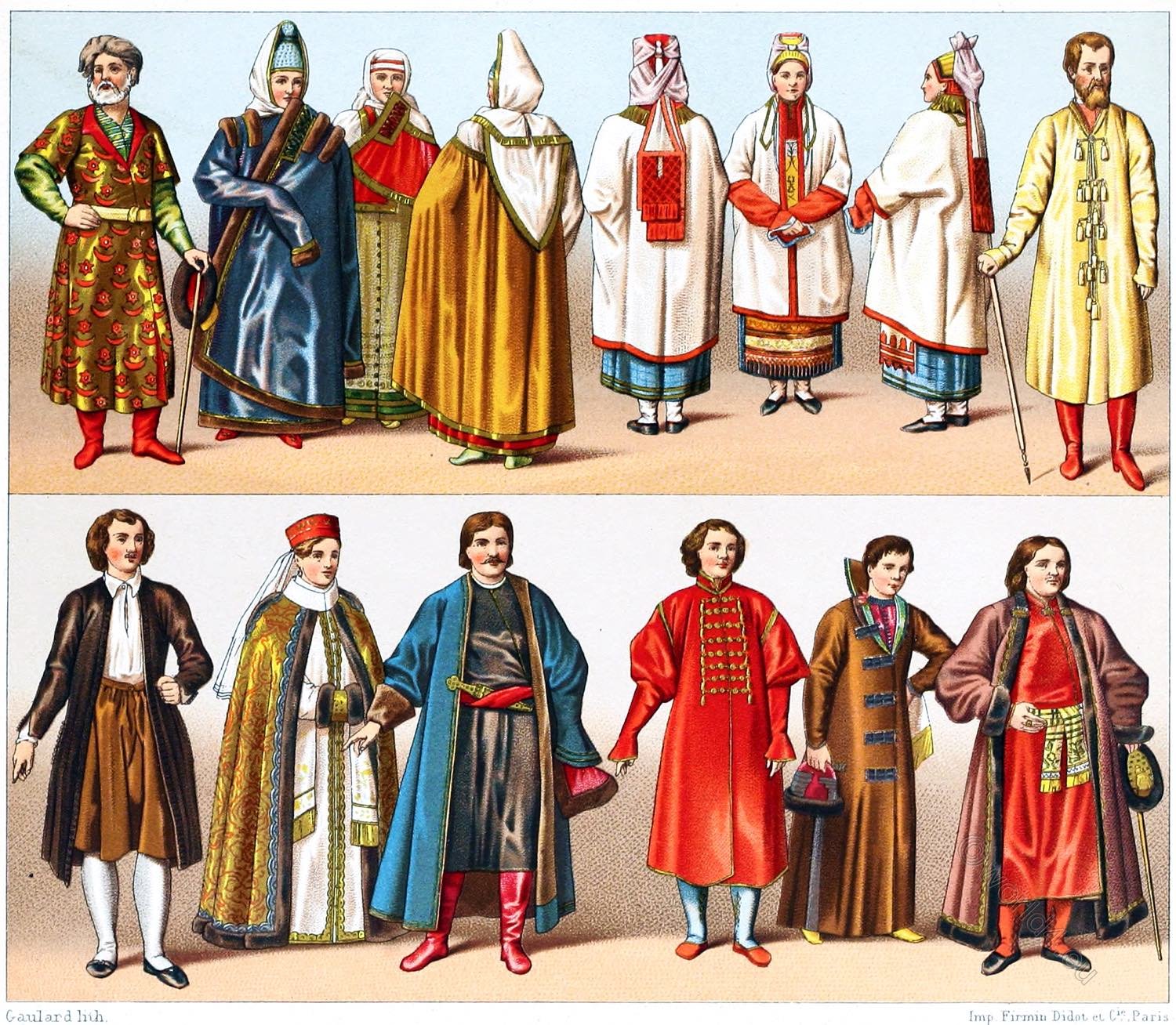
15, 16, 17, 18, 19, 20, 21, 22,
23, 24, 25, 26, 27, 28
Nos. 19. 20, 21. costume of the women of Ryazan (Russian Ряза́нь), capital of the governorate of the same name.
No. 22. Ivan IV, the Terrible. Tsar from 1533-1584.
No. 23. Peter the Great , Tsar from 1682-1725. In sailor’s costume, preserved in the Museum of Arms in Moscow.
No. 24. Boyar’s daughter at the time of Peter the Great. After an engraving in Corneille de Bruyn Voyages par la Moscovie (1708; French, 1718).
No. 25 A Prince Repnin. After an engraving of the same work.
No. 26. Peter the Great in the so-called Polish Caftan.
No. 27. Prince Peter Repnin. After an engraving in the Travels of Olearius (1647).
No. 28. The Boyar Leon Narishkin. After a painting of the 16th century in the Hermitage at Petersburg.
In historical times, the Russians borrowed their costume, like their religion, from the Byzantines, until the long closed skirt and sleeveless overcoat were supplanted after the Mongol conquest by the short, open doublet buttoned across the chest and the coat with collar and sleeves.
Source: History of Costume in Chronological Development by Auguste Racinet. Edited by Adolf Rosenberg. Berlin 1888.
Related
Discover more from World4 Costume Culture History
Subscribe to get the latest posts sent to your email.

